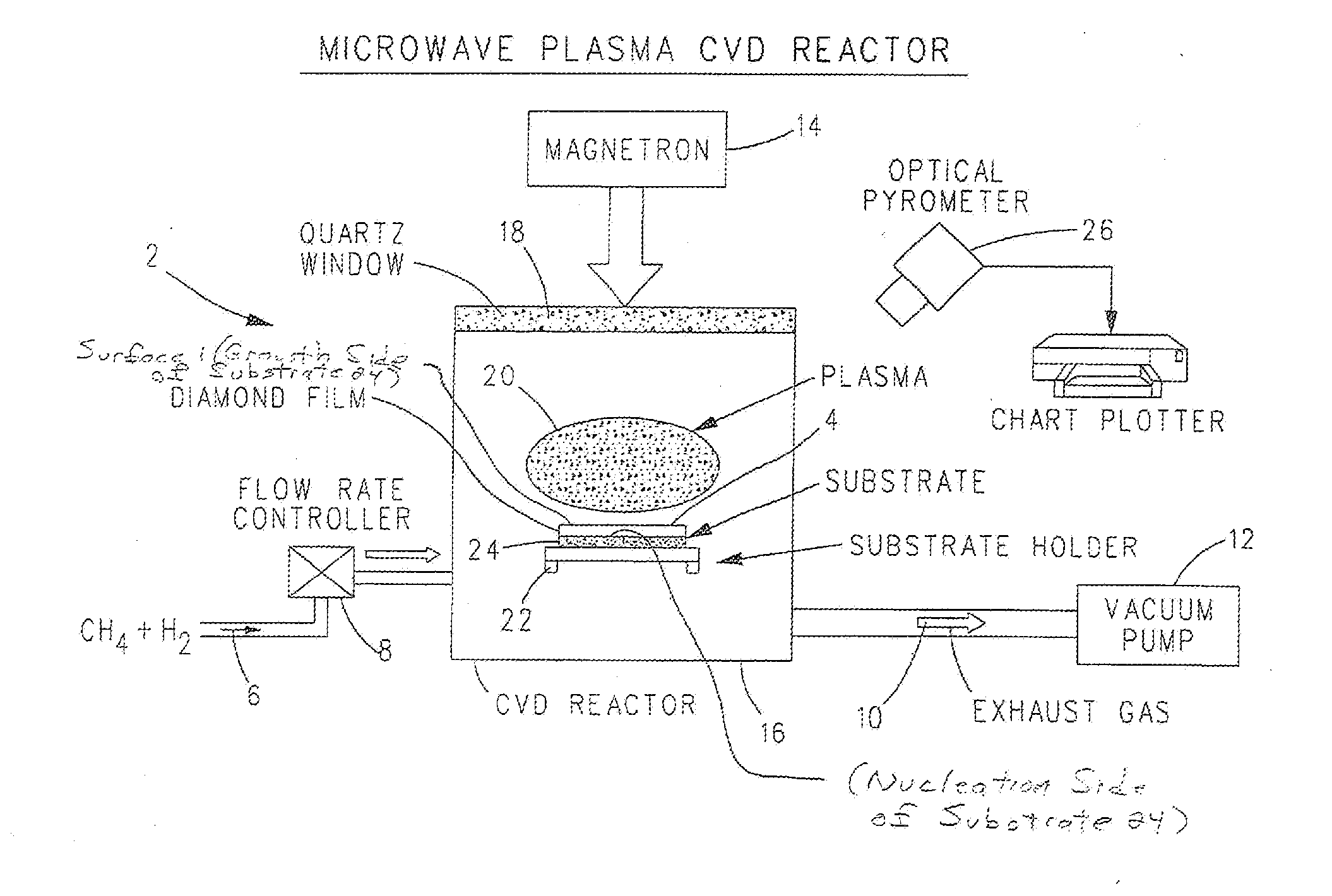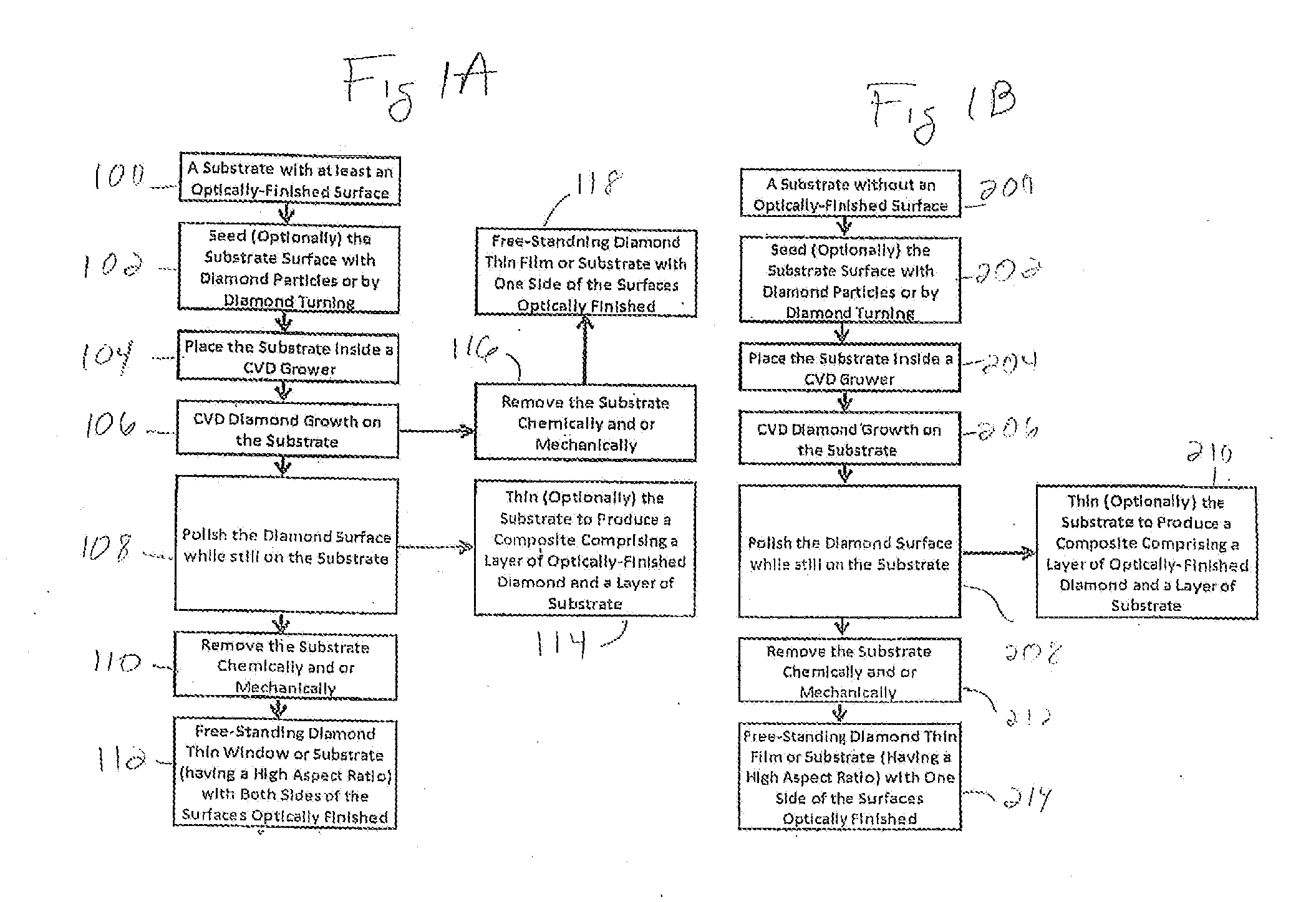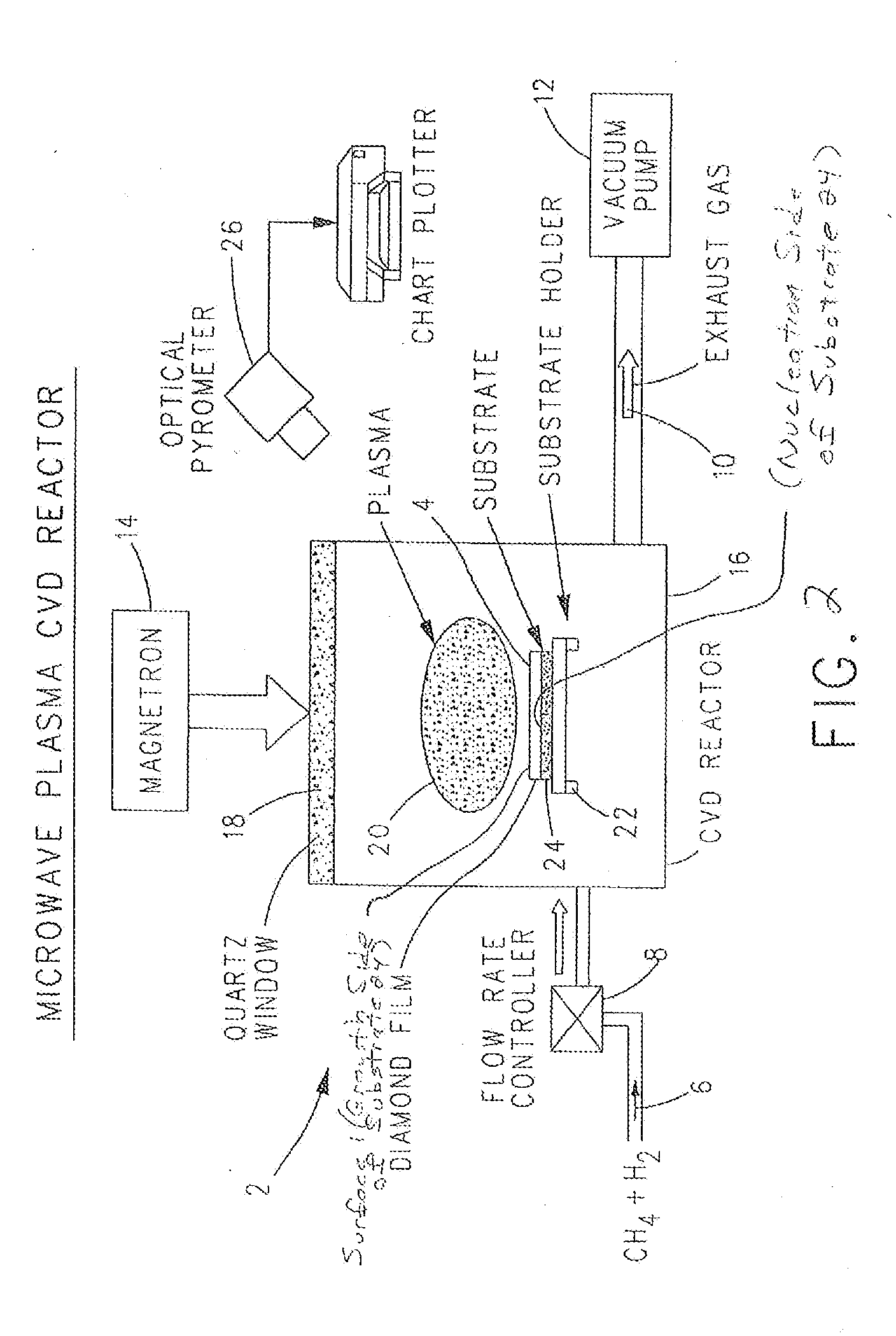Optically-Finished Thin Diamond Substrate or Window of High Aspect Ratio and a Method of Production Thereof
a technology of diamond substrate and high aspect ratio, which is applied in the direction of chemical vapor deposition coating, metal material coating process, coating, etc., can solve the problems of limited geometrical dimension, limited availability in nature, and inability to meet the requirements of large dimensions,
- Summary
- Abstract
- Description
- Claims
- Application Information
AI Technical Summary
Benefits of technology
Problems solved by technology
Method used
Image
Examples
example 1
Producing Diamond Films with One Surface Having an Optical Finish
[0106]With reference to FIG. 3A-3C and with continuing reference to FIG. 2, in an example, a piece of single crystal silicon 66 mm in diameter and 11.5 mm in thickness was fabricated using a typical silicon fabrication process and used as silicon substrate 24. Surface 1 of substrate 24 was diamond-turned to an optical-finish surface with a Ra of 6 to 7 nm. A logo “II-VI” was also machined recessively by diamond-turning a “II-VI” pattern of trenches into Surface 1 of silicon substrate 24. Then, silicon substrate 24 was placed in CVD reactor 16, with the diamond-turned optically-finished surface (Surface 1) facing toward quartz window 18. A mixture of reactive gases 6 comprising hydrogen and methane, e.g., 1,850 mL / min hydrogen and 13.6 mL / min methane, was flowed into microwave plasma CVD reactor 16 under the control of mass flow controller 8. After plasma 20 ignition, magnetron 14 power and reactor 16 pressure were tune...
example 2
Producing Diamond Films with One or Two Surfaces Having an Optical Finish
[0110]In another example, a piece of single crystal silicon 2 inches (50.8 mm) inches in diameter and 10 mm in thickness was fabricated using a typical silicon fabrication process and used as silicon substrate 24. Both surfaces of this silicon substrate 24 were optically finished via a typical chemical-mechanical polishing process to an Ra of less than 1 nm. Then, this entire silicon substrate 24 was ultrasonically-treated with a diamond (0.25 microns)-ethanol suspension slurry. This silicon substrate 24 was then placed in a CVD reactor 16, with one of the optically-finished surfaces facing quartz window 18. A mixture of reactive gases 6, e.g., 1,850 mL / min hydrogen and 13.6 mL / min methane, was flowed into the microwave plasma CVD reactor 16. After plasma 20 ignition, magnetron 14 power and reactor pressure 16 were tuned so that the plasma 20 size covered the surface of silicon substrate 24 facing quartz window...
example 3
Diamond Film(s) Grown on a Single Crystal Si Substrate (166 mm Diameter×10 mm Thickness) with Both Surfaces Chemically-Etched—Producing a Diamond Film with One Surface Having an Optical Finish
[0113]In another example, a piece of single crystal silicon 166 mm in diameter and 10 mm in thickness was fabricated using a typical silicon fabrication process and used as silicon substrate 24. Both surfaces of this silicon substrate 24 were finished via typical chemical-etching process to a surface roughness (Ra) of 918 nm. Then, this entire silicon substrate 24 was rubbed with diamond powders and placed in CVD reactor 16 (FIG. 2). A mixture of reactive gases 6, e.g., 2,800 mL / min hydrogen and 84 mL / min methane, was flowed into microwave plasma CVD reactor 16 under the control of mass flow controller 8. After plasma 20 ignition, magnetron 14 power and reactor 16 pressure were tuned so that the plasma 20 size covered the surface of silicon substrate 24 facing quality window 18. The diamond gro...
PUM
| Property | Measurement | Unit |
|---|---|---|
| thickness | aaaaa | aaaaa |
| thickness | aaaaa | aaaaa |
| thickness | aaaaa | aaaaa |
Abstract
Description
Claims
Application Information
 Login to View More
Login to View More - R&D
- Intellectual Property
- Life Sciences
- Materials
- Tech Scout
- Unparalleled Data Quality
- Higher Quality Content
- 60% Fewer Hallucinations
Browse by: Latest US Patents, China's latest patents, Technical Efficacy Thesaurus, Application Domain, Technology Topic, Popular Technical Reports.
© 2025 PatSnap. All rights reserved.Legal|Privacy policy|Modern Slavery Act Transparency Statement|Sitemap|About US| Contact US: help@patsnap.com



